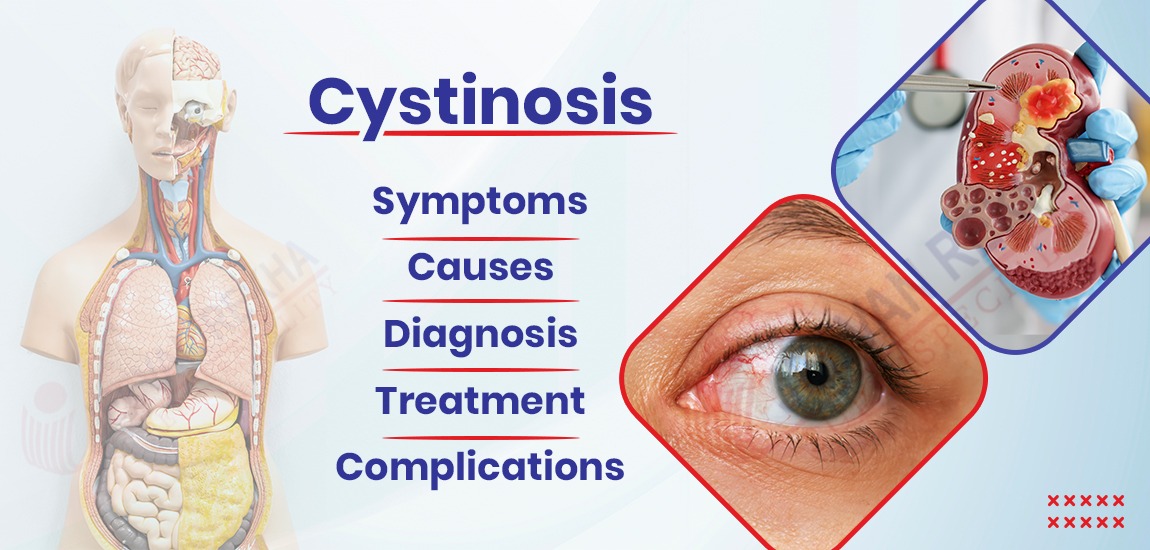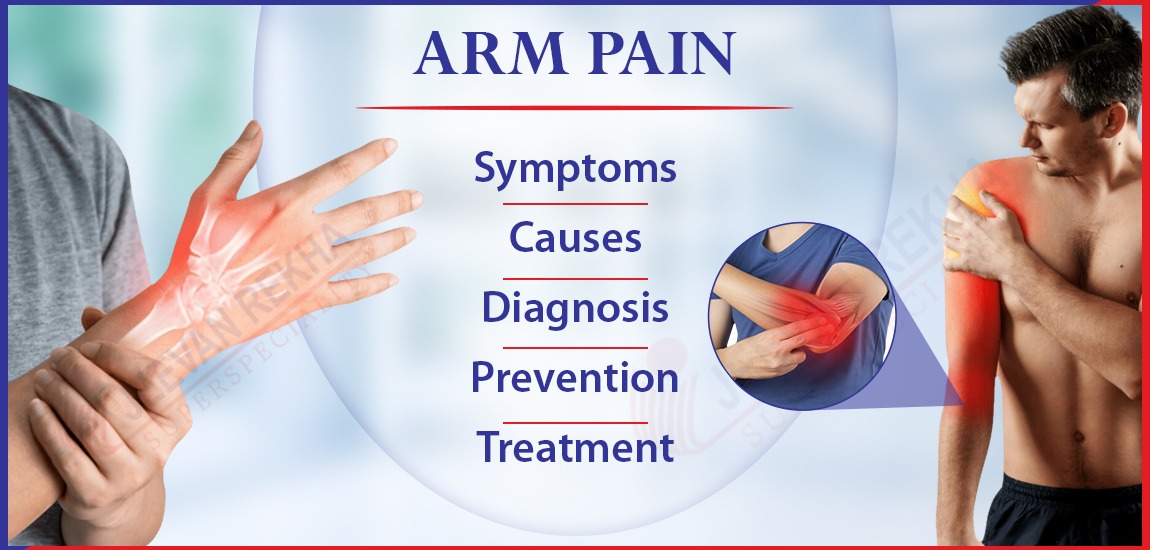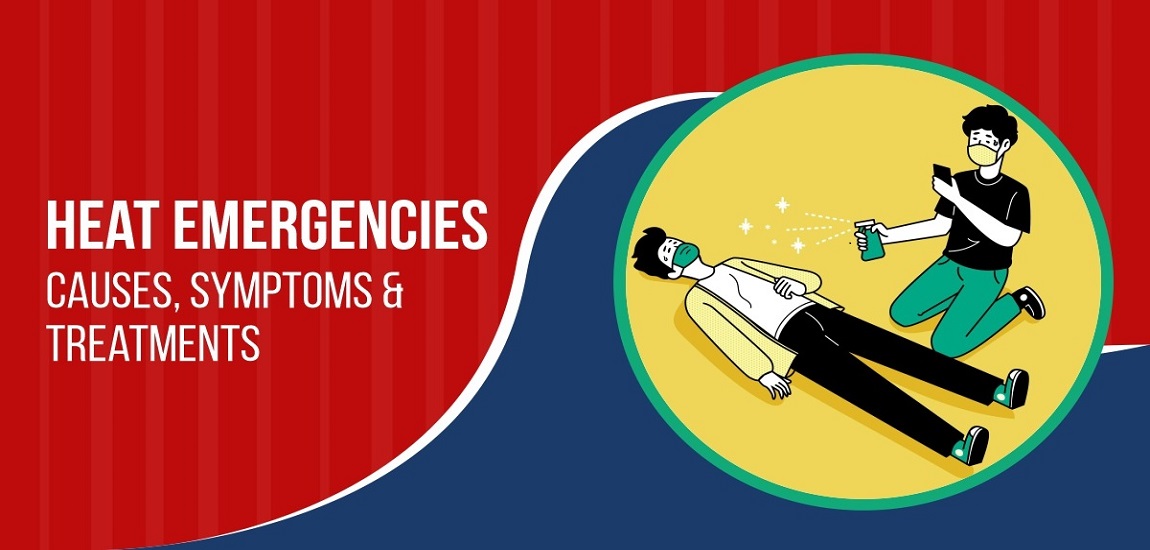
- By JRSH Admin
- In Health and Tips,
- Posted August 15, 2023
Cystinosis: Symptoms, Causes, Diagnosis, Treatment and Complications
What is Cystinosis?
Cystinosis is a rare, multisystem genetic disorder that affects the kidneys, eyes, muscles, liver, pancreas, and other tissues and organs of the body.
Nephropathic cystinosis, intermediate cystinosis, and non-nephropathic (or ocular) cystinosis are the three main subtypes of cystinosis. Cystinosis can manifest at different ages, and each person will experience the condition differently.
The most prevalent and severe form of cystinosis is nephropathic cystinosis, which usually manifests in infancy. The development and progression of the symptoms linked to cystinosis must be slowed down through early identification and prompt treatment. The two organs that are most commonly impacted are the kidneys and eyes.
A kidney transplant is ultimately necessary for people with intermediate or nephropathic cystinosis. Eye corneas are the only organs affected by non-nephropathic cystinosis. Cystinosis is an inherited autosomal recessive condition brought on by mutations in the CTNS gene.
Also read: Brown Spot on Your Eye
Symptoms of Cystinosis
The symptoms of cystinosis can vary depending on the specific form of the condition, its severity, and the age at which symptoms first appear. The three main forms of cystinosis are nephropathic cystinosis, intermediate cystinosis, and non-nephropathic (ocular) cystinosis. Here are some common symptoms associated with each form:
1. Nephropathic Cystinosis:
- Kidney Dysfunction: The hallmark symptom is kidney dysfunction, which can lead to excessive thirst, increased urine production (polyuria), dehydration, and electrolyte imbalances.
- Growth Impairment: Children with nephropathic cystinosis often experience growth failure and delayed puberty.
- Fanconi Syndrome: This is a condition where substances normally reabsorbed by the kidneys are excreted in the urine. It can lead to low levels of important minerals, such as potassium, calcium, and phosphate, as well as metabolic acidosis.
- Vomiting and Diarrhea: Children may experience gastrointestinal symptoms due to electrolyte imbalances and kidney dysfunction.
- Muscle Weakness: Some individuals may develop muscle weakness or neuromuscular issues.
2. Intermediate Cystinosis:
- Symptoms may be similar to nephropathic cystinosis but are generally less severe.
- Kidney dysfunction and growth impairment are still possible but may manifest at a later age.
- Other organ systems, such as the eyes and central nervous system, might be affected to a lesser extent.
3. Non-Nephropathic (Ocular) Cystinosis:
- Photophobia: Sensitivity to light is a common symptom, often leading to discomfort and avoidance of bright light.
- Corneal Crystal Deposits: The cornea of the eye can develop cystine crystal deposits, which can impair vision and lead to vision problems if left untreated.
In all forms of cystinosis, without appropriate treatment, the accumulation of cystine crystals can lead to tissue and organ damage over time. It's important to note that symptoms can vary widely between individuals, even among those with the same form of the disorder. For enhancing quality of life and avoiding complications, early diagnosis and appropriate management are essential.
Causes of Cystinosis
Cystinosis is primarily caused by genetic mutations that affect the CTNS gene. The CTNS gene provides instructions for producing a protein called cystinosin, which is involved in transporting the amino acid cystine out of lysosomes, the cellular compartments responsible for waste processing. Mutations in the CTNS gene disrupt this transport process, leading to the accumulation of cystine crystals within cells.
The accumulation of cystine crystals can result in cellular damage and dysfunction, leading to the various symptoms and complications associated with cystinosis. The disorder is inherited in an autosomal recessive manner, which means that an affected individual must inherit two copies of the mutated gene (one from each parent) to develop the condition.
Here's an overview of the genetic and inheritance aspects of cystinosis:
- Autosomal Recessive Inheritance: Cystinosis is transmitted through autosomal recessive inheritance pattern. This means that individuals with one normal copy of the CTNS gene (carriers) do not usually show symptoms of the disorder. However, when both parents are carriers, there's a 25% chance with each pregnancy that their child will inherit two mutated copies of the gene and develop cystinosis.
- Mutations in the CTNS Gene: The CTNS gene is located on chromosome 17. Mutations in this gene lead to reduced or absent cystinosin protein function, which impairs the transport of cystine out of lysosomes.
- Variability in Symptoms: The severity and presentation of cystinosis can vary based on the specific mutations involved, as well as other genetic and environmental factors.
Diagnosis of Cystinosis
The diagnosis of cystinosis typically involves a combination of clinical evaluation, laboratory tests, and genetic testing. Since cystinosis is a rare genetic disorder, a specialized healthcare team, often including nephrologists, geneticists, and other specialists, is usually involved in the diagnostic process. Here are the key steps in diagnosing cystinosis:
1. Clinical Evaluation: A healthcare provider will assess the patient's medical history, symptoms, and physical examination findings. The presence of characteristic symptoms such as kidney dysfunction, growth impairment, photophobia (sensitivity to light), or other relevant signs will be evaluated.
2. Laboratory Tests:
- Cystine Measurement: One of the main diagnostic tests involves measuring cystine levels in white blood cells or other tissues. Elevated cystine levels are indicative of cystinosis.
- Kidney Function Tests: Blood tests to assess kidney function, including serum creatinine, blood urea nitrogen (BUN), and electrolyte levels, help determine the extent of kidney involvement.
3. Eye Examination: For non-nephropathic (ocular) cystinosis, an eye examination may reveal the presence of corneal crystals and related eye issues.
4. Genetic Testing:
- CTNS Gene Sequencing: Genetic testing involves analyzing the CTNS gene for mutations. This can confirm the presence of genetic changes that are consistent with cystinosis.
- Carrier Testing: Genetic testing can also identify carriers of cystinosis mutations. This is particularly relevant for family members of affected individuals.
5. Kidney Biopsy (if necessary): In some cases, a kidney biopsy may be performed to evaluate the extent of cystine crystal accumulation and tissue damage.
6. Other Imaging: Additional tests such as ultrasound or other imaging modalities may be used to assess the kidneys and other affected organs.
7. Evaluation for Complications: Individuals diagnosed with cystinosis may undergo further assessments to identify and manage potential complications, such as kidney dysfunction, electrolyte imbalances, and growth issues.
Treatment of Cystinosis
The treatment of cystinosis involves managing symptoms and reducing cystine accumulation. Here's a brief overview of the key aspects of cystinosis treatment:
- Cystine Depletion: The primary goal is to reduce cystine levels within cells. This is achieved using medications like cysteamine, which helps remove excess cystine from the lysosomes.
- Medication: Cysteamine therapy is a cornerstone of treatment. It can be administered orally or as eye drops, depending on the form of cystinosis and the affected organs.
- Kidney Function Monitoring: Regular monitoring of kidney function is crucial to detect any decline early. Nephrologists assess factors such as creatinine, BUN, and glomerular filtration rate (GFR).
- Nutritional Support: Managing nutritional needs, particularly in children with growth issues, is important to ensure proper growth and development.
- Fluids and Electrolytes: Addressing electrolyte imbalances and maintaining proper fluid balance are essential components of care.
- Eye Care: For ocular cystinosis, eye drops may be prescribed to reduce discomfort and protect the cornea. Regular eye examinations are recommended.
- Growth and Development Support: Children with cystinosis may require growth hormone therapy if growth impairment is significant.
- Transplantation: In severe cases, kidney transplantation may be necessary if kidney function deteriorates significantly. Other organ transplants (such as corneal transplants) might be considered as well.
- Multidisciplinary Care: A team of specialists, including nephrologists, ophthalmologists, geneticists, dietitians, and other healthcare professionals, collaborates to provide comprehensive care.
Also read: Cataracts - Symptoms, Causes, Prevention and Treatment
Complications of Cystinosis
The complications associated with cystinosis can vary depending on the form of the disorder and its severity. Here are some potential complications:
- Kidney Dysfunction and Renal Failure: The most severe form, nephropathic cystinosis, primarily affects the kidneys. Cystine accumulation can lead to kidney dysfunction, ultimately progressing to renal failure if left untreated. Kidney transplantation may be necessary.
- Growth Impairment: Children with cystinosis, especially those with nephropathic or intermediate forms, often experience growth failure due to kidney dysfunction and other factors. Growth hormone therapy may be needed to support normal growth.
- Electrolyte Imbalances: Cystinosis can disrupt the balance of electrolytes (such as sodium, potassium, calcium, and phosphate), leading to complications like metabolic acidosis and bone abnormalities.
- Muscle Weakness: Some individuals with cystinosis may experience muscle weakness or neuromuscular issues.
- Ocular Complications: Non-nephropathic (ocular) cystinosis primarily affects the eyes. Corneal cystine crystal accumulation can lead to photophobia, corneal damage, and vision impairment.
- Endocrine Issues: Cystinosis can affect the endocrine system, leading to thyroid dysfunction, diabetes, and other hormonal imbalances.
- Central Nervous System Involvement: In some cases, individuals with cystinosis may experience neurological symptoms, including motor and cognitive impairments.
Tags
Blog Search
Latest Posts
-
बर्ड फ्लू के लक्षण, कारण, उपचार और बचाव के उपाय जानें
December 04, 2025 -
Best Diet Plan for Menopause Weight Management
November 25, 2025 -
Pulmonary Fibrosis Treatment: Understanding Lung Scarring and Breathing Problems
November 21, 2025 -
Arrhythmia: Types, Causes, Symptoms, and Treatment
November 07, 2025 -
Silent Heart Attack: Causes, Symptoms and Treatment
October 24, 2025




